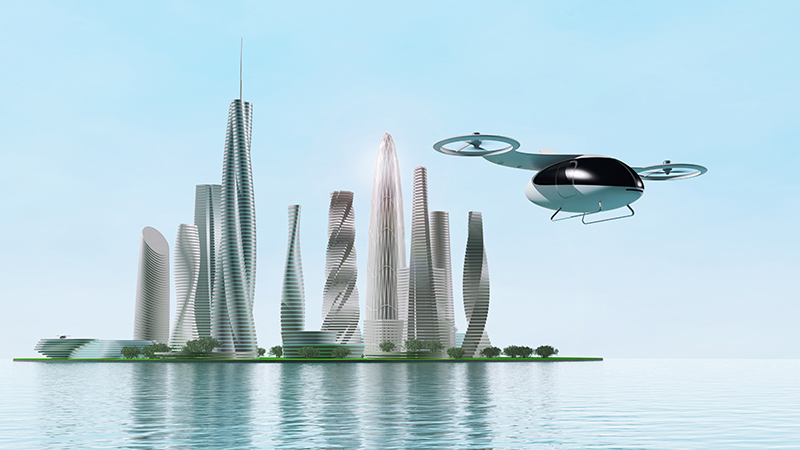

While much of the eVTOL industry’s focus is on intercity transport, the technology has the potential to revolutionise many other sectors. One such example is the tourism industry.
Let us take a look at how eVTOLs will transform tourism using safe, quiet, and clean transport.
Granted, you do not need a helicopter or aeroplane to visit all major tourist hotspots. But consider destinations such as the Grand Canyon, Machu Picchu, Peru’s Nazca Lines, Morocco’s Atlas Mountains, and many more.
What do all of these destinations have in common? They are either difficult to get to or look better from the sky. Many of us cannot afford private helicopters, but tourist companies capitalise on this by offering day rentals and trips to some of the more difficult-to-reach destinations.
But, helicopters are loud and expensive to run. Perhaps you have visited somewhere like the Grand Canyon and had your quiet hike interrupted by tourist aircraft passing overhead. It is a common problem that disrupts the serenity of these otherwise beautiful destinations.
Utilising eVTOLs for the tourism industry would address clear pain points. The first, and perhaps most important, is that eVTOLs would completely change tourist’s access to destinations that are hard to reach. It could be coastal islands, mountain tours, wild forests, or anywhere else they would like to visit. All the eVTOL would need is a GPS location and a flat place to land.
As with the urban taxi market, this is one of eVTOLs’ main advantages over traditional aircraft. You would not need any kind of established landing platform, meaning an eVTOL could land almost anywhere on any terrain.
Switching to eVTOLs would be a cheaper option, too. It would mean tourism companies would not need to hire pilots and drivers or provide supporting infrastructure. Tourist excursions to even hard-to-reach destinations would be much easier. For example, visiting the Atlas Mountains would be possible from a neighbouring city (e.g. Marrakech) without spending four hours in an SUV on unmade roads.
Currently, aerial trips are only available to people who can afford their own helicopter or are willing to spend considerable amounts on a holiday day trip. eVTOLs would provide far more people with the same aerial experience at a much lower cost.
Then, there are the obvious benefits during the journey. Specifically, eVTOLs are very quiet, meaning tourists would have quieter and more serene journeys. It seems almost contradictory to visit somewhere like the Grand Canyon in an aircraft so loud you cannot hear yourself think.
The only restriction for this revolution would be the necessary infrastructure. Many eVTOL companies specialise in intercity travel, while fewer have set their sights on long-range trips. As a result, we might need to see charging stations and skyports at tourist hotspots. But, this is arguably no more of an eyesore than car parks, so there should be little resistance considering the benefits eVTOLs will offer.
International plane journeys aside, the tourism industry has a considerable carbon footprint. While services account for a small portion of this, switching to sustainable clean travel is clearly a sensible move. Combine this with the ability to see landmarks from a new perspective, and tourist eVTOLs seem like a winner.
Of course, it will be a few years before we see this idea take off. However, using quiet eVTOLs to visit tourist attractions should become popular in the future because it presents very few disadvantages compared to current options.